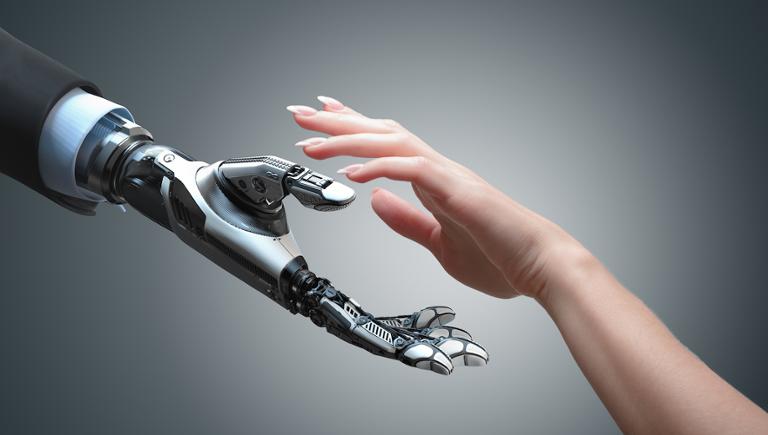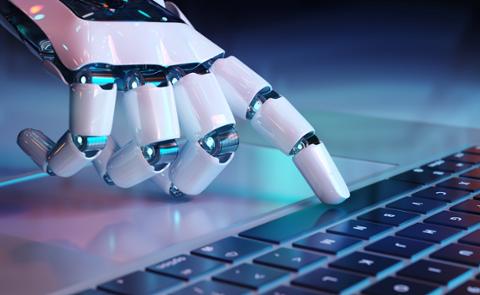Machine vision is a growing market that offers a way to improve efficiencies and support companies as they look to not just survive but thrive in a volatile environment. A recent report says the machine vision market is projected to be worth $15.5 billion in 2026.
Machine vision is a class of technologies that process information from visual inputs such as images, documents, computer screens, videos and more. Its value in automation lies in its ability to capture and process large quantities of documents, images and video quickly and efficiently in quantities and speeds far in excess of human capability.
Machine vision usually works with other advanced technologies, including natural language processing, robotic process automation (RPA), artificial intelligence (AI), and machine learning (ML), to deliver automation’s impact on business operations. You can think of machine vision as the eyes of automation, while AI and ML are the brains and RPA provides the “hands on keyboards” required to do the work, as well as the backbone you hang these technologies onto to leverage them in automation.
Capitalizing on Business Opportunities
Everything from a growing need for quality inspection and automation to vision-guided robots, from government initiatives supporting industrial automation to the integration of AI into edge devices, are just some of the reasons this market is growing. Automation adoption has accelerated in recent years, becoming essential for businesses to remain competitive across industries. To put it simply, think of automations as “digital employees” doing work. Without adding machine vision, all of those digital employees will be blind.
One of the most common uses of machine vision in automation is document processing. Machine vision combined with machine learning are the active ingredients in what is referred to as intelligent document processing (IDP): automatically processing and classifying documents, extracting printed or handwritten data, and then deciphering the content for further automated processing. This technology is so powerful, it is now actually better at reading handwriting than humans are.
Insurance administrators need no longer devote their days to manually digitizing paper applications; banking clerks don’t have to manually enter customer information or spreadsheet data into databases; brokers can avoid the additional work that arises from the errors that can occur when processing high volumes of transactions under strict daily deadlines. By filtering machine vision-extracted data inputs through machine learning and AI based technologies, the speed, accuracy and organization of processing needed to embrace automation technologies can be realized.
The sophistication of how computer vision is applied in automation is not limited to document processing, though. Video-based facial recognition in security processes, checkout-less supermarkets and remote equipment identification via drones for inventory management are examples of how computer vision is being leveraged in automation.
Machine vision-based technologies are even becoming central to the creation of automations themselves. For example, instead of relying on human workers to describe processes that are being automated when designing automations, recordings of the process to be automated are created and then machine vision software, combined with other technologies, is used to capture the process end-to-end and provide the input for automating a lot of the work needed to program the digital workers (bots).
Ensuring Accuracy and Leaving Collaboration with Humans in the Loop
Standards of accuracy and bias are a concern cited by organizations when it comes to relying on artificial solutions to undertake certain processes. This is why it’s important to have the right processes in place for each application to ensure the best outcome. For automated document processing, measures that loop in human workers when uncertainties arise are common. Just as some oversight is needed for humans undertaking processes, diligence should be applied to digital workers, as well.
At the same time, machine vision and AI are also used to QA human-based processes. In financial services, machine vision is used to help monitor processes to ensure compliance. In healthcare, automated second opinions of radiology-based diagnoses are increasing in use; this is partly because it reduces the time and cost it takes to process second opinions but also because, in a growing number of areas, machine vision/AI-based processing of radiology images is more accurate than humans.
With automation, human healthcare workers have more time to devote to their patients. This is the real driver of automation in healthcare—the realization that every cost saved in administration and clinical processes can be allocated to improving patient care.
The future of work is agile and machine vision is the key to unleashing automation’s full potential—adding more intelligence to intelligent automation. This technology allows digital workers to interact with screens, documents and video like humans do, which is a big breakthrough. Ultimately, it results in a more fulfilled and satisfied workforce, along with a more competitive and profitable business.
Endless possibilities and opportunities
Machine vision is integral to maximizing the impact of advanced automation technologies on business operations and paving the way for increased capabilities in the automation space. Self-driving cars, a technology that is not too far off, demonstrates how machine vision is being pushed to its furthest capabilities. But for now, machine vision enables businesses to successfully navigate an evolving landscape, reduce costs and increase efficiencies—no matter what challenges and uncertainties lie ahead.
Lou Bachenheimer, PhD, is CTO, Americas for SS&C Blue Prism.



